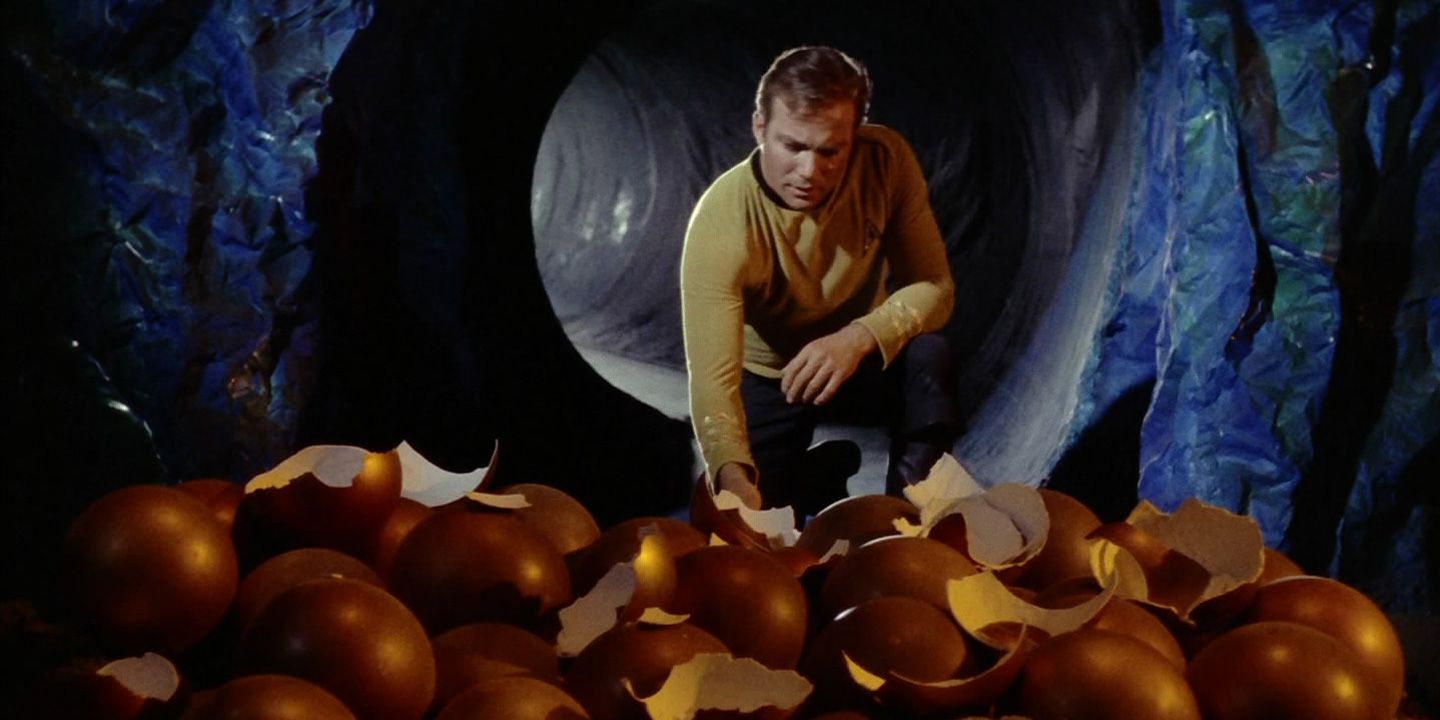Star Trek: The Original Series‘ “The Devil in the Dark” is remembered for its classic monster and moral themes – but also for several unlikely franchise firsts. Premiering in September 1966, Gene Roddenberry’s Star Trek was revolutionary for a variety of reasons. The adventures of the USS Enterprise would redefine on-screen sci-fi, and remain just as influential over half a century later. Star Trek also made steps toward improving diversity and inclusion on TV, with the main cast featuring actors from traditionally underrepresented backgrounds such as Nichelle Nichols as Lt. Uhura and George Takei as Hikaru Sulu.
“The Devil in the Dark” aired during Star Trek‘s maiden voyage, and is remembered as one of the strongest episodes from the original series era. Kirk and the gang are sent to investigate a mining colony under attack from a mysterious creature, but when Spock uses his Vulcan mind meld, they discover a deeper motivation to the Horta’s actions. The molten monster is merely a mother trying to protect her eggs from greedy human miners, and wishes only to be left alone. Kirk and Spock protect the being they were initially sent to kill, and everyone lives happily ever after. Encapsulating issues of environmentalism and colonization, “The Devil in the Dark” represents the best of Star Trek… almost.
The first record held by “The Devil in the Dark” concerns its opening sequence. Traditionally, each and every episode of Star Trek: TOS would begin on the Enterprise’s bridge, catching up with the crew as they head towards this week’s disaster. The scenes would set up events to come, often introducing a problem for the protagonists to solve. “The Devil in the Dark” marked the first time Star Trek: TOS deviated from that format (it happened again six episodes later in “Tomorrow Is Yesterday”). Instead of familiar faces, the episode kicks off at the Janus VI mining colony that serves as the story’s primary location. We see a wary miner assigned to guard duty. As his colleagues go to leave, a scream is heard, with the unlucky miner now nothing more than a pile of dust. While not exactly an unwanted record, the opening was a strange deviation from the Star Trek norm after 18 episodes, though one could argue the intro established the mine’s monster far better than Enterprise exposition could’ve.

The other “The Devil in the Dark” record certainly is unwanted, however – the episode is the only Star Trek episode to feature no female speaking parts whatsoever. From Captain Kirk’s landing party to the residents of the mining colony, the episode is wall-to-wall men, with not a woman in sight. The closest “The Devil in the Dark” comes to a female speaking role is the maternal Horta creature trying to communicate with Spock, which obviously doesn’t count (not least because the performer inside the costume was a man). Though Star Trek was undoubtedly progressive for its day, some scenes do make for uncomfortable viewing (McCoy would later slap a pregnant woman in season 2) and “The Devil in the Dark” represents an unfortunate blot on the show’s record.
Thankfully, the lack of female representation in the episode didn’t go unnoticed. Several weeks after airing, Gene Roddenberry resolved to include more women in stories that took place away from the Enterprise, either by incorporating crew members like Nurse Chapel, or by adding female guest stars to settings on a planet’s surface. While Star Trek‘s subsequent record wasn’t perfect (aforementioned McCoy slap, for example), there were no further episodes where a woman didn’t receive at least a small speaking part.
It’s certainly a shame that one of Star Trek‘s best ever episodes carries such a tainted legacy. Many actors have cited “The Devil in the Dark” among their favorites, and understandably so, but it’s impossible to ignore the obvious dip in cast representation.




